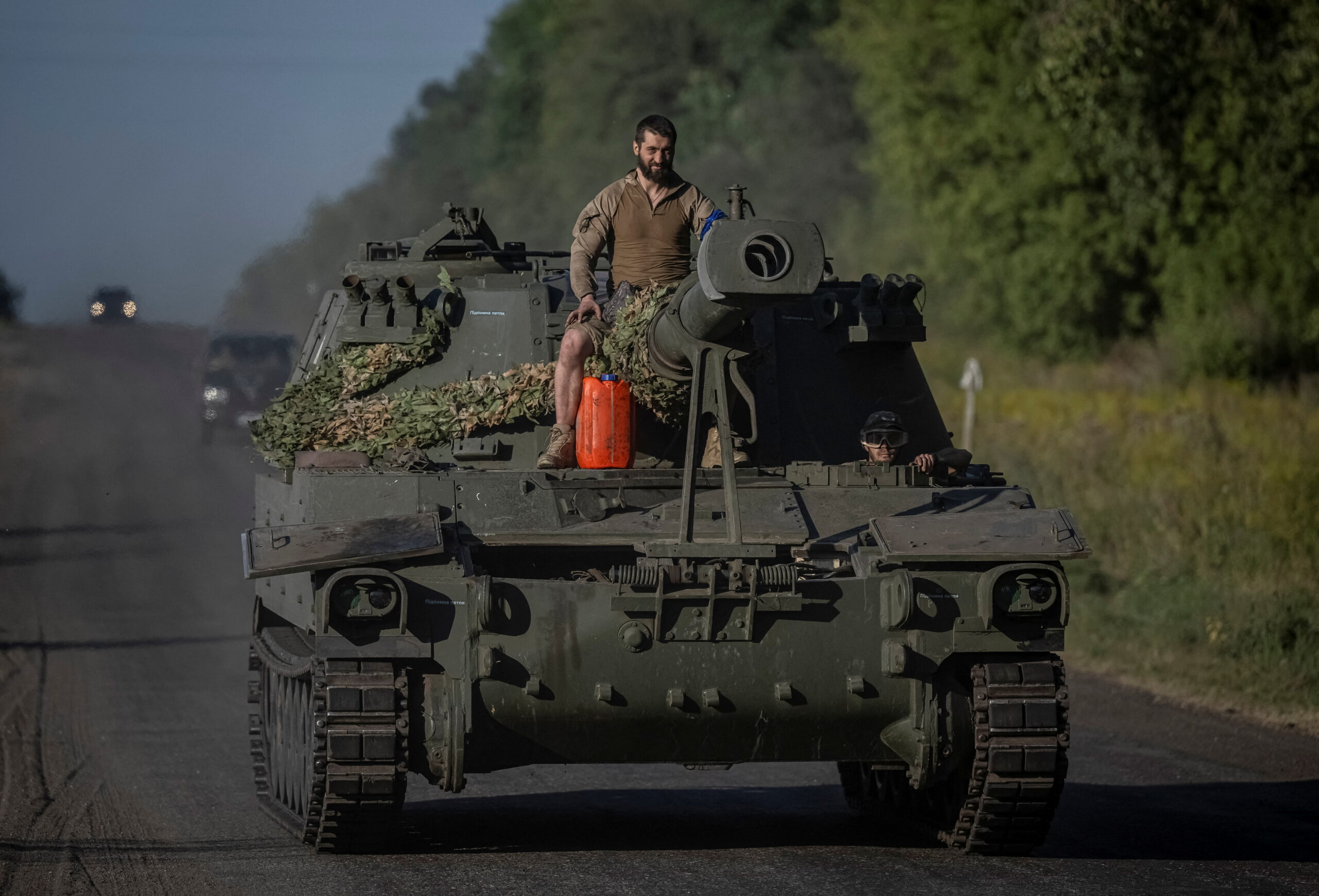- cross-posted to:
- ukrainianconflict
- cross-posted to:
- ukrainianconflict
This is an automated archive made by the Lemmit Bot.
The original was posted on /r/ukrainewarvideoreport by /u/Khabooem on 2024-10-12 06:34:13+00:00.
Putin doesn’t have enough troops to defeat Ukraine and defend Russia The Ukrainian invasion of Russia is now in its third month with little indication that it will end any time soon. Despite a series of Russian counterattacks since the invasion began on August 6, Ukraine continues to control an area of around one thousand square kilometers inside Russia’s Kursk Oblast.
This unprecedented Ukrainian occupation of Russian territory has revealed the limitations of the Kremlin war machine. While many continue to view the Russian military as an irresistible force with virtually limitless supplies of men and machines, it is now increasingly apparent that in reality, Putin’s attempt to conquer Ukraine has left his army dangerously overstretched and unable to defend Russia.
Ukrainian President Volodymyr Zelenskyy had initially hoped that by invading Russia, he could pressure Putin into transferring troops from Ukraine to the home front. So far, this has not happened. Instead, the Russian army has continued to advance steadily in eastern Ukraine and has captured a number of towns and villages since Ukraine’s cross-border incursion began. At the same time, the fact that Putin has had to choose between the invasion of Ukraine the defense of Russia is in itself telling.
Russia’s difficulties on the Kursk front are the latest indication that Moscow is experiencing mounting manpower issues. In recent months, the Russian military has reportedly been forced to dramatically increase the bounties on offer to new recruits. According to investigative Russian news outlet Vyorstka, those who do agree to sign up to fight in Ukraine are now often in very poor health, with the average age of volunteers rising from forty at the start of the invasion to around fifty.
Other signs that Putin is being forced to scrape the bottom of the barrel to replenish the depleted ranks of his army include recent reports that sailors from Russia’s only aircraft carrier, the Admiral Kuznetsov, have been withdrawn from naval service and deployed to Ukraine as infantry. Russia is also in the process of passing new legislation that will allow defendants to sign military contracts and avoid prosecution. Tens of thousands of Russian prisoners have already been released from jail to fight in Ukraine.
Meanwhile, as Ukrainian troops crossed the border into the Kursk region in early August, they found that most of the Russian defenses in the border zone were manned by young conscript troops who were soon surrendering in large numbers. This has allowed Ukraine to replenish its exchange fund and conduct a number of prisoner swaps, while also causing considerable disquiet within Russian society.
Eurasia Center events
Civil Society Europe & Eurasia Human Rights International Norms
Putin’s uncharacteristically restrained reaction to Ukraine’s Kursk incursion suggests that he is well aware of his army’s shortcomings. Far from threatening World War III or attempting to rally his country against the foreign invader, Putin has sought to downplay the entire invasion, and has had remarkably little to say about what is the first foreign occupation of Russian land since World War II.
This underwhelming response has been evident since the very first days of Ukraine’s offensive, which Putin initially dismissed as a mere “provocation.” The Russian media has reportedly been instructed by the Kremlin to minimize the significance of the Ukrainian invasion, and has been tasked with convincing domestic audiences that the presence of Ukrainian troops inside Russia is now the “new normal.”
This does not mean that the Russian military is on the brink of collapse, of course. On the contrary, Putin has recently unveiled ambitious plans to further expand the size of his army to one and a half million soldiers, a move that would make it the second largest in the world after China. He can also announce a further round of mobilization if necessary, but this could potentially fuel domestic unrest and convince thousands of young Russians to flee the country.
Putin will certainly need to find large numbers of additional troops as he looks to compensate for Russia’s staggering losses and achieve his objective of gradually bleeding Ukraine to death in a brutal war of attrition. According to US officials, September 2024 was the bloodiest month of the war for Russian troops in Ukraine, but it was also one of the most successful in terms of new territory seized. With Russia now comfortably outnumbering and outgunning Ukraine, Putin is clearly counting on his country’s far greater capacity to absorb battlefield casualties and keep fighting.
Ukraine’s leaders seem to understand this grim arithmetic perfectly well. Indeed, they appear to have taken the bold decision to invade Russia in large part because they recognized that remaining locked in a war of attrition with their much larger enemy would be an act of national suicide.
Not everyone is convinced by the arguments in favor of the Kursk operation, with some critics calling it a reckless gamble and a strategic blunder that has weakened Ukraine’s defenses at a critical moment. Nevertheless, there is no denying that the offensive has succeeded in challenging the previously prevailing narrative of inevitable Russian victory. Crucially, the Ukrainian invasion of Russia’s Kursk region has also demonstrated that Putin’s overextended army is far more vulnerable than the Kremlin would like us to believe.

